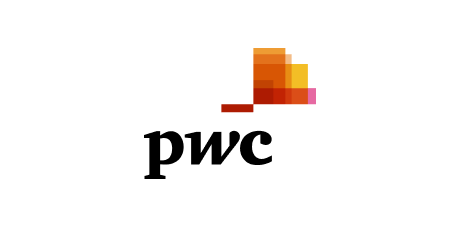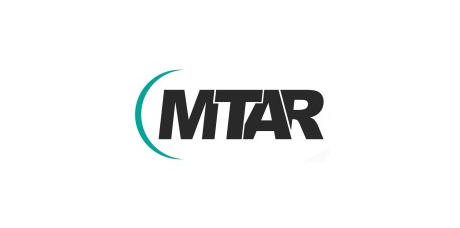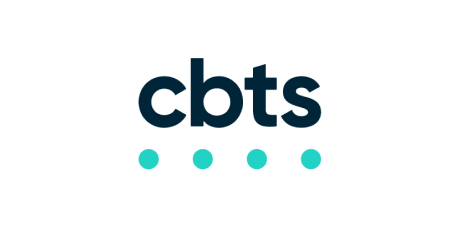Introduction
Data governance and compliance form the foundation of secure and accountable data practices. They help organizations maintain accuracy, consistency, and control over their data while ensuring alignment with legal and regulatory standards. From financial institutions to healthcare providers, every industry relies on strong governance to avoid risks, prevent data breaches, and build trust with stakeholders.
With growing data volumes and evolving regulations, businesses are turning to AI-powered tools to streamline governance processes. AI enhances data classification, tracks usage patterns, and supports real-time compliance monitoring, enabling smarter, faster decision-making. By integrating AI into governance strategies, organizations can stay ahead of compliance challenges and create a future-ready data infrastructure.
What is Data Governance?
Data governance is the strategic approach to managing the availability, usability, integrity, and security of data within an organization. It involves setting clear policies, assigning roles and responsibilities, and implementing standards to ensure data is handled consistently across systems and departments. The ultimate objective is to turn raw data into a trustworthy asset that supports operational efficiency, business intelligence, and regulatory compliance.
A strong data governance framework typically includes several key components:
- Data Quality: Ensures that data is accurate, complete, and reliable, enabling confident decision-making and minimizing errors.
- Metadata Management: Involves organizing and managing information about data, such as its source, usage, and relationships, to improve traceability and understanding.
- Data Lifecycle Management: Oversees the entire journey of data, from creation and storage to usage and deletion, ensuring that it is appropriately governed at every stage.
In the context of digital transformation, the importance of data governance is growing significantly. As businesses adopt cloud platforms, AI tools, and advanced analytics, the volume and complexity of data grow exponentially.
Understanding Data Compliance in Modern Enterprises
Data compliance refers to the process of ensuring that an organization’s data handling practices align with relevant legal, regulatory, and industry standards. It involves safeguarding sensitive information, respecting user privacy rights, and maintaining transparency in how data is collected, stored, processed, and shared.
As regulations continue to evolve, data compliance has become a core business requirement across industries. Several major regulations shape the compliance landscape.
GDPR (General Data Protection Regulation)
Applicable to organizations handling data of EU citizens, GDPR emphasizes user consent, data minimization, and the right to be forgotten.
HIPAA (Health Insurance Portability and Accountability Act)
Relevant to the healthcare industry in the U.S., HIPAA mandates strict protocols for handling personal health information.
CCPA (California Consumer Privacy Act)
Grants California residents greater control over their personal data and requires businesses to disclose data collection and sharing practices.
Non-compliance with these and other regulations can result in severe consequences. Penalties may include hefty fines, legal action, reputational damage, and loss of customer trust. Beyond financial impact, failure to comply can disrupt business operations and hinder partnerships with regulatory-sensitive industries.
AI in Data Governance and Compliance
AI brings intelligent automation to data governance and compliance, helping organizations manage complex data environments with speed and precision.
Automated and Consistent Data Management
AI reduces manual effort and ensures consistent application of data policies.
- Automatically classifies data based on sensitivity and usage
- Applies appropriate access controls and encryption settings
- Enforces data retention and deletion rules with minimal human input
Real-Time Compliance Monitoring
AI enables proactive monitoring and rapid response to compliance risks.
- Analyzes data flows and flags unusual patterns or behaviors
- Detects non-compliance before it escalates into violations
- Generates audit trails for easier regulatory reporting
Predictive Risk Assessment
Machine learning supports preventive compliance strategies through predictive insights.
- Identifies emerging risks based on historical trends and real-time data
- Anticipates potential policy breaches and suggests corrective action
- Enhances regulatory agility with adaptive learning models
Practical Applications in Regulatory Frameworks
AI is already streamlining compliance for major regulations.
- Helps organizations comply with GDPR by identifying and managing personal data
- Automates user data access and deletion requests
- Tracks consent and ensures ongoing policy adherence
Stronger, Scalable Governance Frameworks
Integrating AI into governance strategies creates long-term benefits.
- Reduces dependency on manual processes
- Adapts quickly to changing regulations
- Builds a secure and future-ready data environment
Building a Robust Data Governance Framework
A robust data governance framework helps organizations manage data effectively by creating structure, consistency, and accountability across all data practices. It outlines how data is collected, processed, stored, and protected, ensuring accuracy, quality, and compliance with relevant regulations.
This structured approach allows organizations to build trust in their data while supporting better decision-making. As data ecosystems grow in complexity, a strong governance framework becomes essential for aligning data initiatives with business goals and regulatory expectations.
Roles and Responsibilities: Assigning clear ownership ensures accountability. Data owners, stewards, and custodians each have defined roles in maintaining data quality, security, and accessibility across departments.
Standardized Policies and Procedures: Governance frameworks rely on well-documented policies that dictate how data should be classified, accessed, retained, and shared. These standards help enforce consistency and reduce the risk of non-compliance.
Technology-Driven Implementation: Modern tools support governance with features like data catalogs, metadata management, access control, and lineage tracking. AI can enhance these tools by automating classification and monitoring for policy violations.
Scalable and Sustainable Governance: A good framework is adaptable. It evolves with changing business needs and regulatory landscapes, ensuring ongoing relevance without disrupting operations
Best Practices for Achieving Data Compliance
Data compliance is no longer just about meeting regulatory requirements. It is a core business priority that protects sensitive information, builds customer trust, and ensures operational resilience. As global data privacy laws continue to evolve, businesses must adopt a proactive approach grounded in proven best practices to maintain long-term compliance and minimize risk.
1. Data Mapping and Inventory
A comprehensive data inventory is the foundation of compliance. Organizations must identify where personal, financial, and sensitive data resides, how it flows, and who can access it. This clarity supports policy enforcement, audit readiness, and better risk management across departments.
2. Privacy-by-Design and Default
Building privacy into systems from the start ensures that user data is protected at every stage. This involves limiting unnecessary data collection, securing default configurations, and enabling transparent user control options. It positions privacy as a core design principle.
3. Continuous Monitoring and Reporting
Ongoing oversight is key to staying compliant. Real-time monitoring tools can detect unusual activity, enforce data access rules, and generate reports for regulatory review. These tools help organizations address issues early and stay prepared for audits.
4. Incident Response Planning
Preparation is essential in case of a data breach or compliance failure. An incident response plan outlines the steps for investigation, containment, communication, and recovery. Acting quickly limits damage and demonstrates accountability to regulators and customers.
Future Trends in Data Governance and Compliance
The future of data governance and compliance is being shaped by rapid technological advancements and rising regulatory expectations. AI and machine learning are playing a growing role by automating data classification, improving risk detection, and enabling real-time decision-making. These technologies help businesses stay ahead of compliance issues by identifying patterns and anomalies that may otherwise go unnoticed.
At the same time, there is a clear shift toward real-time compliance tracking, where organizations monitor data activity continuously instead of relying on periodic checks. As global regulations continue to evolve, companies must stay agile and adapt quickly to new rules. Building flexible, tech-enabled governance frameworks will be key to meeting future demands while maintaining trust and transparency.
Conclusion
Managing data without a clear governance and compliance strategy often leads to inconsistent practices, security vulnerabilities, and costly regulatory penalties. As data volumes grow and regulations tighten, businesses can no longer afford to rely on fragmented systems or outdated processes. What’s needed is a structured, future-ready approach that brings clarity, control, and confidence to every aspect of data management.
Whether you’re starting from scratch or looking to strengthen your existing framework, our expert team is here to help. With tailored solutions that combine policy, technology, and AI-driven intelligence, we make data governance and compliance both scalable and sustainable.
Get in touch with WeThinkApp today to build a secure, compliant, and data-driven future for your organization.
FAQ
Why is data governance critical for businesses undergoing digital transformation?
As organizations shift to cloud platforms and adopt AI tools, the volume and complexity of their data increase dramatically. Data governance ensures consistency, security, and accuracy across all systems, enabling better decision-making and smoother compliance with regulatory requirements. It also helps prevent data silos, enhances data quality, and builds a foundation for scalable digital growth.
How does AI improve data compliance and governance processes?
AI brings intelligent automation to data governance by classifying data, monitoring usage, and detecting anomalies in real time. It reduces manual errors, enforces data policies consistently, and supports proactive compliance through predictive analytics. This allows businesses to stay ahead of regulatory risks while managing large and dynamic data ecosystems more efficiently.
What are the consequences of poor data governance and non-compliance?
Poor governance can lead to inaccurate or unsecured data, increasing the risk of breaches, financial penalties, and reputational damage. Non-compliance with regulations like GDPR, HIPAA, or CCPA can result in legal action, loss of customer trust, and disrupted business operations. A strong governance framework minimizes these risks by ensuring data is managed responsibly and transparently.







